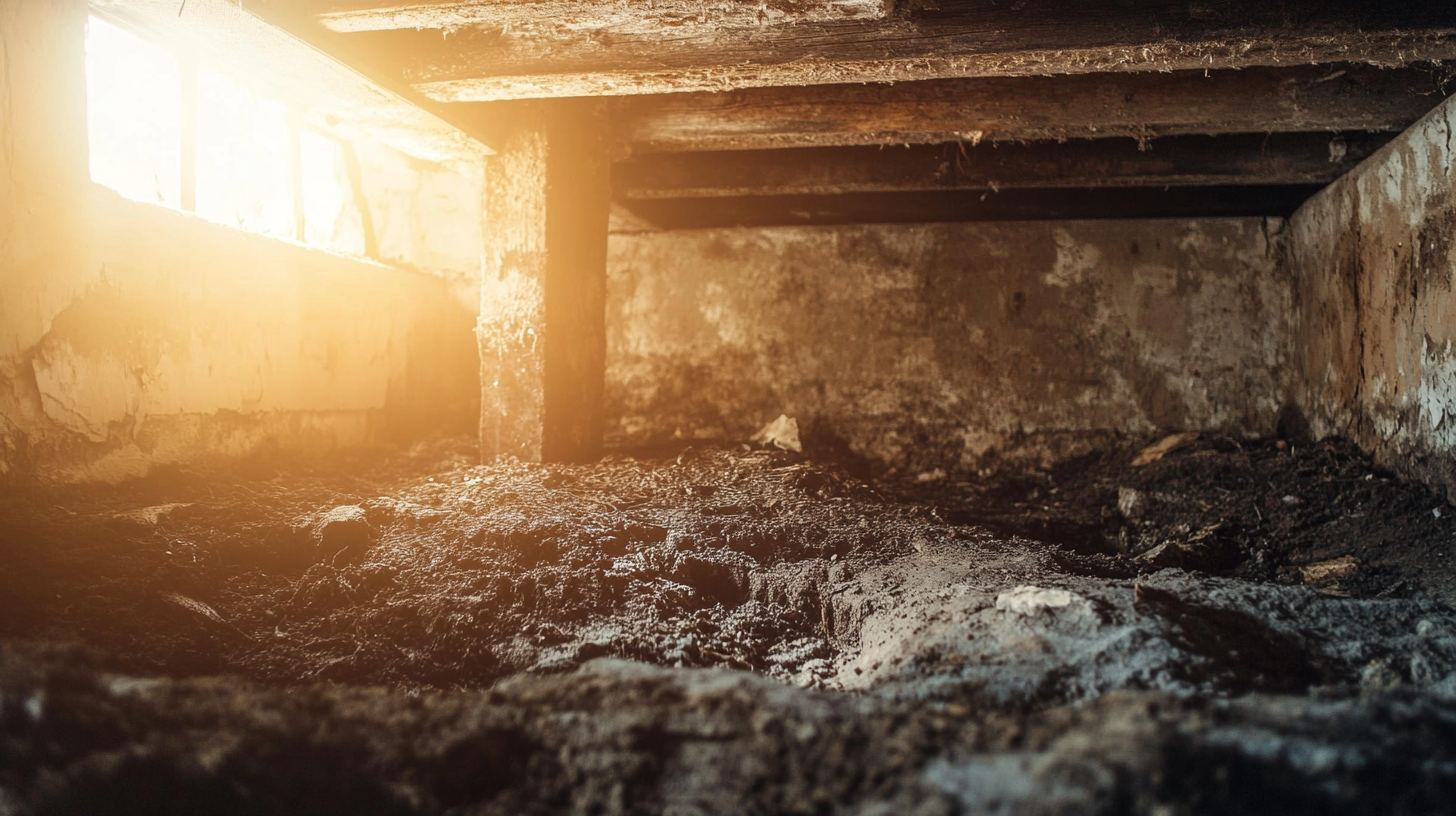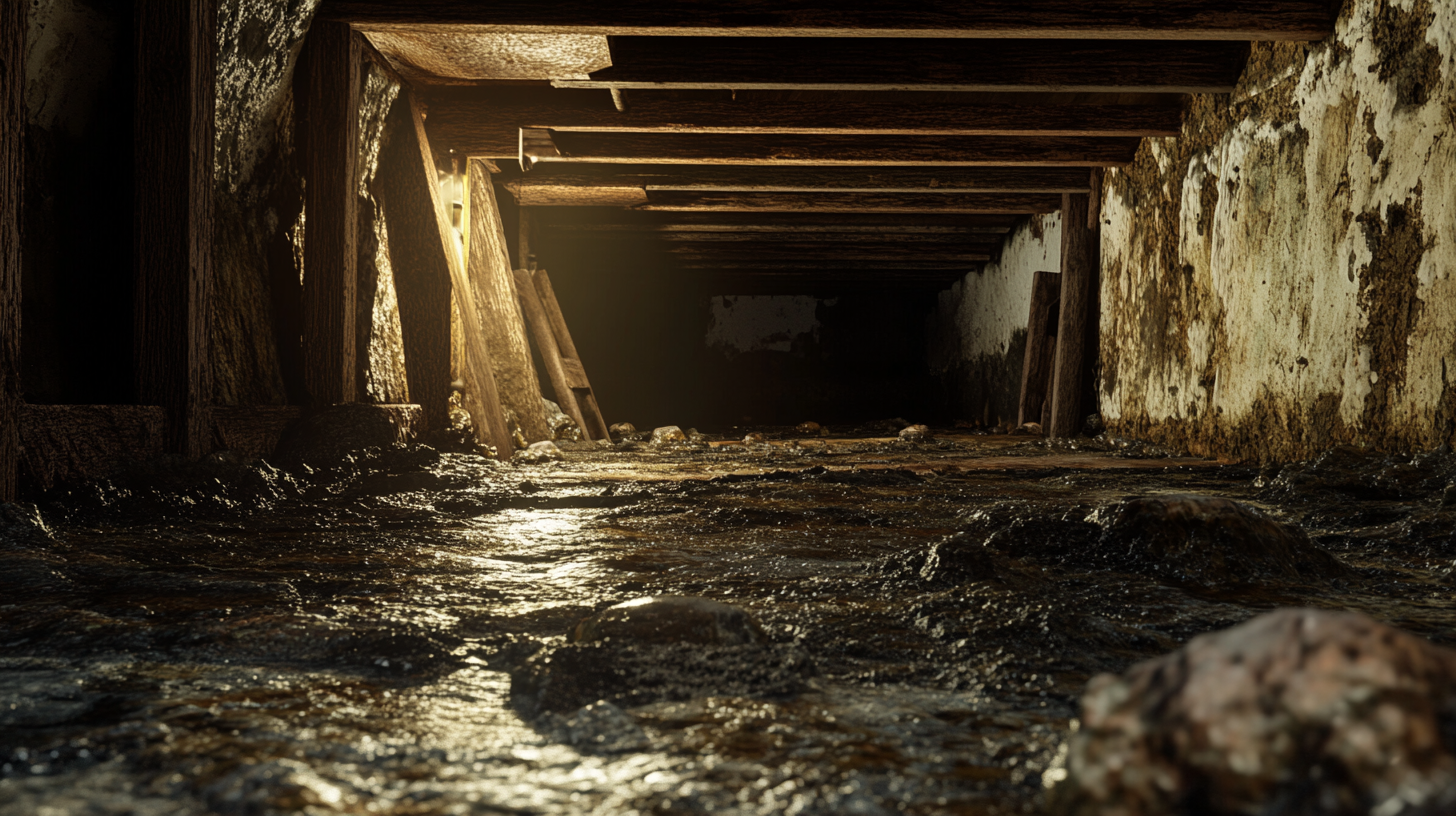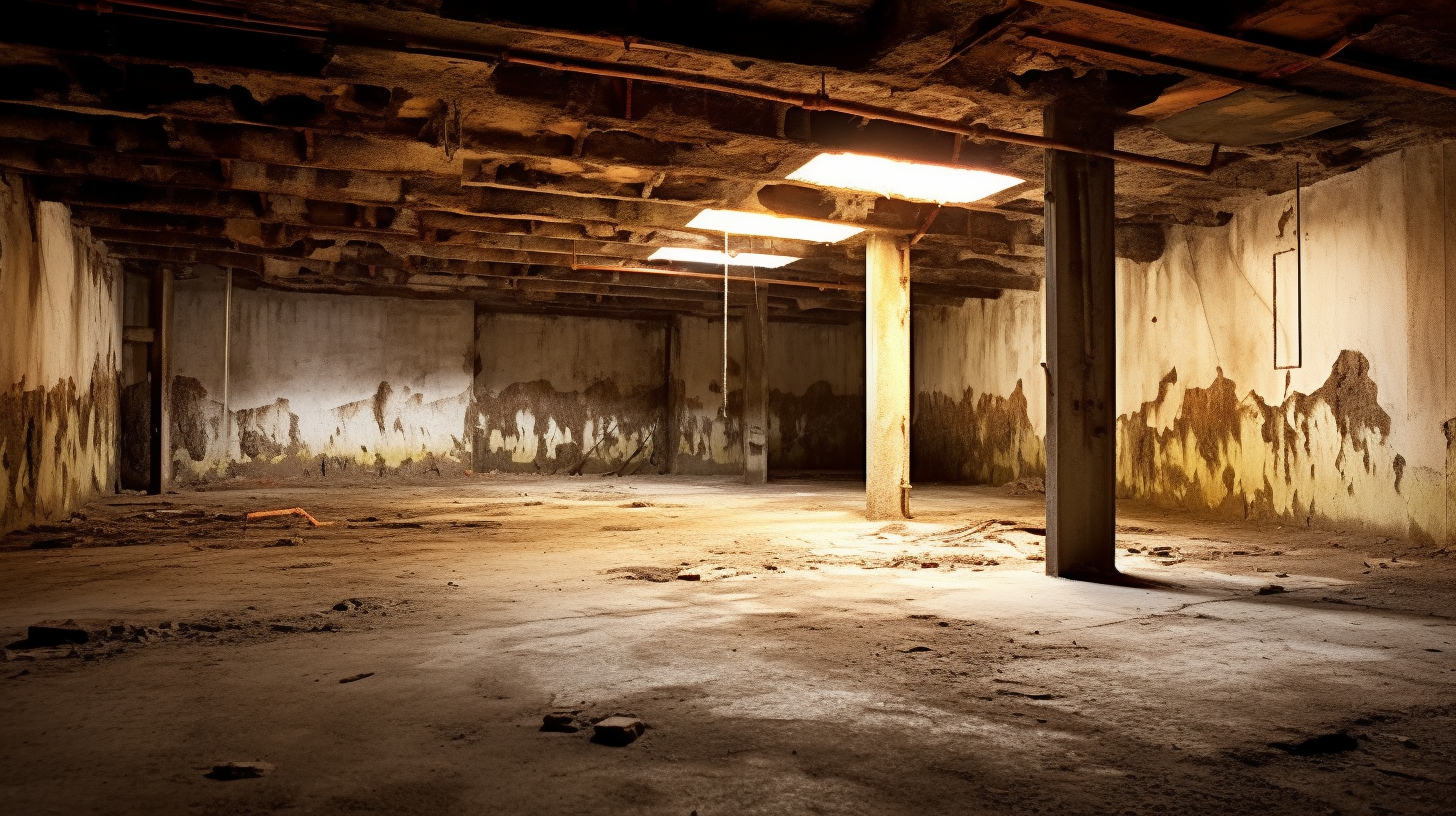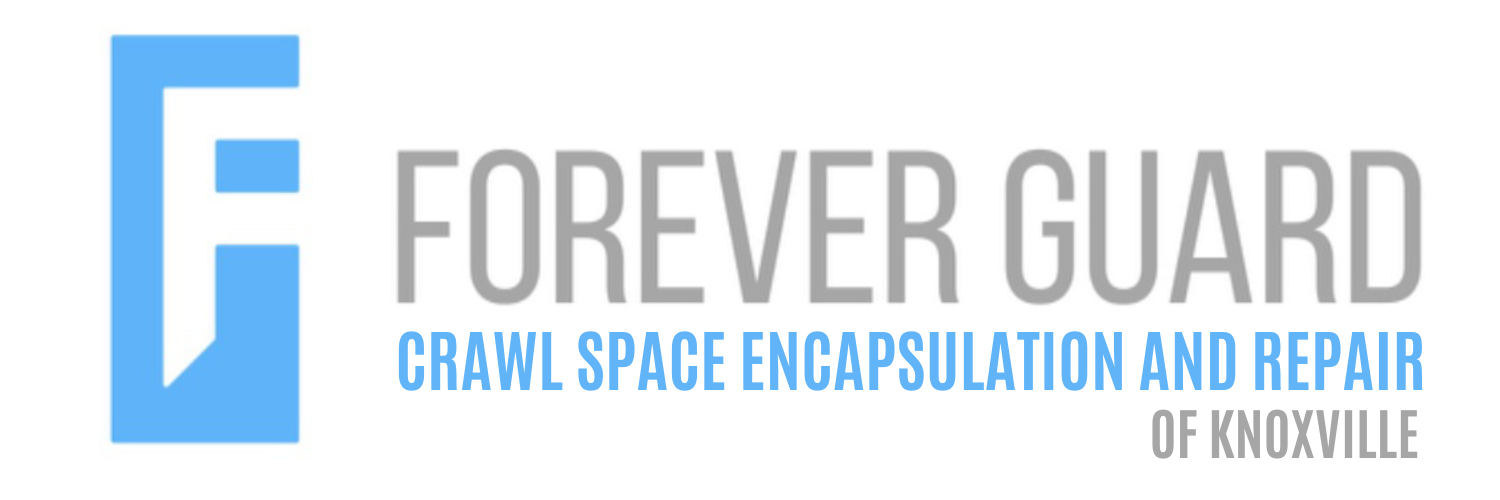Now IS THe Time To...

Crawl Space Services In Knoxville, TN
Stetson Howard: 865-432-6743
CRAWL SPACE ENCAPSULATION, REPAIR, WATERPROOFING & MOLD REMOVAL
No-Obligation, Free Inspections
No-Obligation Free Estimates
We Warranty All of Our Work
100% Satisfaction Guaranteed
Waterproofing is a crucial aspect of any residential construction project, providing essential protection against moisture and water damage. From basements and foundations to roofs and bathrooms, ensuring that your home is properly sealed from water infiltration is key to maintaining its structural integrity. Without effective waterproofing, homes can suffer from mold growth, wood rot, and long-term damage that compromises the safety and longevity of the building. In this blog, we’ll explore the various waterproofing solutions available for residential projects and how they help safeguard your home for years to come.
Understanding the Importance of Waterproofing in Residential Projects
Waterproofing is an essential component in protecting homes from the damaging effects of moisture and water infiltration. Without proper waterproofing, even the sturdiest residential structures can suffer from water-related issues that compromise their integrity and lead to costly repairs. Below, we explore why waterproofing is so crucial and which key areas of a home should be prioritized for protection.
Why Waterproofing is Essential
Waterproofing serves as the first line of defense against water damage, and its importance cannot be overstated. There are several critical reasons why it’s essential for any residential project:
- Prevents Structural Damage: When water infiltrates a building’s structure, it can weaken foundations, walls, and other key components. Over time, this can lead to cracks, erosion, and even catastrophic failure in extreme cases. Proper waterproofing keeps moisture out, preserving the structural integrity of the home.
- Avoids Mold Growth: Excess moisture in a home creates an ideal environment for mold growth, which can spread quickly in damp areas such as basements, bathrooms, and kitchens. Mold not only damages surfaces but can also pose significant health risks, especially to those with respiratory issues. Waterproofing helps to eliminate these risks by keeping moisture levels in check.
- Enhances Longevity and Durability: Homes in areas prone to heavy rain, flooding, or high humidity face increased exposure to water-related problems. By ensuring proper waterproofing, homeowners can extend the lifespan of their property, reduce the need for repairs, and maintain the value of their investment over time.
Key Areas of a Home That Need Waterproofing
Not every part of a home is equally vulnerable to water damage, but certain areas are more prone to moisture infiltration and require special attention during the waterproofing process. Here are the key areas where waterproofing is crucial:
- Foundations and Basements: As the lowest part of a home, foundations and basements are often exposed to groundwater and runoff. Without proper waterproofing, these areas can experience water leaks, leading to cracks and structural damage. Exterior and interior waterproofing systems, such as bituminous membranes or cementitious coatings, are essential for protecting these areas.
- Roofs and Terraces: Flat roofs, terraces, and balconies are continuously exposed to the elements, including rain and snow. Waterproofing membranes such as EPDM rubber or liquid-applied coatings create a seamless barrier, preventing water from seeping into the roof structure and causing leaks or rotting.
- Bathrooms and Kitchens: These areas of the home experience constant exposure to water from daily use. In bathrooms, particularly around showers and bathtubs, waterproofing is essential to prevent leaks that can lead to mold growth or damage to underlying materials. Similarly, kitchens should be waterproofed to protect areas around sinks and countertops where water spills or leaks can occur.
- Exterior Walls and Balconies: Exterior walls are the first defense against rain and weather, and they must be adequately waterproofed to prevent moisture from penetrating the building envelope. Balconies, especially those that are exposed, should also be treated with waterproofing systems to ensure water doesn’t seep into the interior structure.
Top 10 Waterproofing Materials for Residential Projects
Selecting the right waterproofing material is critical to protecting your home from moisture damage and ensuring its longevity. Each material offers unique benefits and is best suited for specific applications, whether you're waterproofing a roof, basement, or terrace. Below, we explore the top 10 waterproofing materials commonly used in residential projects, along with their advantages and limitations.
Cementitious Waterproofing
How It Works:
Cementitious waterproofing involves mixing cement-based compounds with additives to form a rigid, waterproof barrier when applied to surfaces.
Best Uses:
Ideal for internal wet areas such as bathrooms, kitchens, and basements, where flexibility is not as crucial.
Advantages:
- Easy to apply
- Affordable
- Durable and reliable for indoor applications
Limitations:
Lacks flexibility, making it unsuitable for areas with high movement or expansion.
Liquid Waterproofing Membranes
How It Works:
Liquid waterproofing membranes are applied as a liquid and dry to form a seamless, flexible waterproof layer.
Best Uses:
Perfect for roofs, terraces, and balconies, where seamless coverage is needed to prevent leaks.
Advantages:
- Provides flexibility and seamless coverage
- Resistant to UV rays
- Suitable for irregular surfaces
Limitations:
- Requires professional application for best results
- May need reapplication over time, depending on wear.
Bituminous Membrane Waterproofing
How It Works:
This material involves rolled sheets of bitumen applied to flat roofs and underground structures to create a durable, water-resistant barrier.
Best Uses:
Commonly used for roofs, basements, and foundations.
Advantages:
- Durable and cost-effective
- Strong protection against water infiltration
Limitations:
- Susceptible to UV damage, requiring an additional protective layer for outdoor use.
EPDM (Ethylene Propylene Diene Monomer) Rubber
How It Works:
A synthetic rubber membrane known for its flexibility, EPDM forms a reliable waterproofing solution, especially in harsh conditions.
Best Uses:
Well-suited for flat and low-slope roofs and garden terraces.
Advantages:
- Extremely durable and flexible
- Resistant to UV rays and extreme temperatures
Limitations:
- Requires professional installation
- Higher upfront cost compared to other materials.
Polyurethane Waterproofing
How It Works:
Polyurethane is a liquid-applied membrane that cures into a flexible, seamless waterproofing layer, ideal for areas exposed to temperature fluctuations.
Best Uses:
Ideal for roofs, terraces, and balconies where flexibility is important.
Advantages:
- High flexibility to accommodate movement
- UV resistant and durable
Limitations:
- Sensitive to moisture during application
- Requires proper surface preparation for optimal performance.
PVC Waterproofing Membrane
How It Works:
PVC (Polyvinyl Chloride) membranes are synthetic plastic polymers applied to flat or sloped roofs to create a water-tight barrier.
Best Uses:
Excellent for flat roofs, green roofs, and basements.
Advantages:
- Durable and flexible
- Resistant to weathering and chemicals
Limitations:
- Requires professional installation
- Higher cost compared to traditional membranes.
Bentonite Clay Waterproofing
How It Works:
Bentonite is a natural clay that expands when exposed to moisture, forming an impermeable seal against water infiltration.
Best Uses:
Effective for below-grade applications such as basements and foundations.
Advantages:
- Eco-friendly and self-sealing
- Highly effective in preventing water ingress underground
Limitations:
- Limited flexibility
- Prone to degradation if exposed to direct sunlight or weather conditions.
Bituminous Coating Waterproofing
How It Works:
This is a flexible, asphalt-based coating applied to surfaces to shield them from water penetration.
Best Uses:
Commonly applied to foundations, basements, and retaining walls for protection below ground.
Advantages:
- Affordable and easy to apply
- Provides good protection for underground structures
Limitations:
Not UV resistant, so it requires additional protection if exposed to sunlight.
Thermoplastic Polyolefin (TPO) Membrane
How It Works:
TPO is a single-ply membrane that combines the flexibility of EPDM with the application ease of PVC, making it a versatile waterproofing solution.
Best Uses:
Perfect for flat and low-slope roofs.
Advantages:
- UV resistant and heat-reflective, reducing energy costs
- Durable and energy-efficient
Limitations:
- Requires professional installation
- Heat welding is needed for proper sealing.
Silicate-Based Waterproofing
How It Works:
A silicate-based solution penetrates concrete and reacts with its minerals to form a permanent waterproof barrier.
Best Uses:
Ideal for concrete walls, foundations, and floors.
Advantages:
- Provides permanent waterproofing for concrete surfaces
- Easy to apply and doesn’t alter the appearance of the concrete
Limitations:
- Only effective for concrete structures
- Ineffective on non-concrete materials.
How to Choose the Right Waterproofing Material for Your Residential Project
Choosing the right waterproofing material is crucial to ensuring the long-term protection and durability of your home. With various materials available, each suited for different areas and conditions, it’s important to consider key factors such as the type of space being waterproofed, your budget, ease of application, and the flexibility needed for the project. In this guide, we’ll break down these factors to help you select the best waterproofing solution for your home.
Consider the Area to Be Waterproofed
One of the first factors to evaluate is whether the area being waterproofed is an internal or external space, as different environments require different waterproofing materials.
Internal vs. External Areas:
- Internal Areas: Spaces like bathrooms and kitchens are prone to constant moisture but not direct exposure to the elements. For these areas, materials such as cementitious coatings or liquid waterproofing membranes work well due to their ease of application and water resistance. These materials provide a solid barrier against water without the need for UV resistance.
- External Areas: For outdoor spaces like roofs, terraces, and basements, stronger, more durable materials are needed. EPDM rubber, polyurethane, or bituminous membranes offer the necessary flexibility and durability to handle weather exposure, temperature fluctuations, and UV radiation, making them ideal for these high-exposure areas.
Budget and Long-Term Durability
While the initial cost of waterproofing materials is a key consideration, it’s also important to think about the long-term durability of the product. Some materials may have a higher upfront cost but provide long-lasting protection that reduces the need for frequent repairs or reapplication.
- Cost vs. Durability: Materials like liquid membranes and EPDM rubber may require a larger investment initially, but their durability makes them a cost-effective solution over time. They provide excellent resistance to water, UV radiation, and temperature changes, often lasting for decades with minimal maintenance.
- Balance Budget and Lifespan: If your budget is a concern, consider the material’s expected lifespan in addition to the initial cost. More affordable materials like cementitious coatings may work well for interior areas, but they may need more maintenance or reapplication compared to higher-end options.
Ease of Application
The complexity of installation is another important factor when choosing waterproofing materials. Some materials are DIY-friendly, while others require professional installation to ensure proper performance.
- DIY-Friendly Materials: For those looking to save on labor costs and handle smaller waterproofing projects themselves, cementitious coatings and bituminous coatings are popular choices. These materials are relatively easy to apply with basic tools and do not require specialized skills.
- Professional Installation Required: Certain materials, like EPDM, PVC membranes, and TPO membranes, offer superior waterproofing performance but require expert installation. These materials often involve precise techniques like heat welding, which is essential for achieving a seamless and watertight finish.
Flexibility and Movement
Waterproofing materials need to accommodate the specific movement and expansion of the structure they are applied to. Some areas of your home may experience significant movement due to temperature changes or structural shifts, while others remain relatively rigid.
- Areas with Expansion and Contraction: Spaces such as roofs, terraces, and balconies experience natural expansion and contraction due to temperature fluctuations and weather exposure. Flexible materials like polyurethane or liquid waterproofing membranes are ideal for these areas, as they can stretch and contract without cracking or losing their waterproofing abilities.
- Rigid Structures: For more stable structures like foundations or below-grade applications where flexibility is less critical, rigid materials such as bentonite clay or silicate-based waterproofing solutions are excellent choices. These materials provide strong, long-lasting waterproofing and work well in areas with minimal movement.
How to Choose the Right Waterproofing Material for Your Project
Proper maintenance and care of waterproofing materials are essential to ensure they continue protecting your home from water damage over the long term. While high-quality waterproofing systems provide durable protection, regular inspections and timely repairs are crucial to addressing any issues before they become major problems. In this section, we’ll cover the key steps for maintaining your waterproofing systems and keeping them in top condition.
Regular Inspections
Routine inspections are the first line of defense in maintaining the integrity of your waterproofing system. By identifying early signs of wear or damage, you can address issues before they lead to costly repairs or structural damage.
Roof Inspections:
Roofs and terraces are particularly vulnerable to wear and tear due to constant exposure to weather. It's important to inspect these areas regularly, especially after extreme weather events like heavy rain, snow, or high winds. During inspections, check for:
- Cracks or tears in waterproof membranes.
- Ponding water, which can weaken the material over time.
- Signs of wear like discoloration or bubbling, which may indicate the need for reapplication or repairs.
Foundations and Basements:
Below-grade waterproofing systems, such as those applied to foundations and basements, require regular inspections to detect any seepage or cracks. Water ingress in these areas can lead to structural damage or mold growth. Look for:
- Damp patches on basement walls or floors.
- Visible cracks in foundation walls.
- Efflorescence, a white powdery substance that indicates water is seeping through the concrete.
Addressing these issues promptly can prevent them from worsening and protect your home from long-term damage.
Timely Repairs and Reapplications
Even the most durable waterproofing materials can degrade over time due to exposure to weather, UV radiation, and natural wear. To maintain their effectiveness, timely repairs and reapplications are often necessary.
Reapply Coatings:
Some waterproofing materials, such as bituminous coatings and liquid waterproofing membranes, may need to be reapplied after several years, especially in areas exposed to harsh weather conditions. Over time, these coatings can break down, reducing their ability to provide full waterproof protection. Regular reapplications ensure the material remains intact and continues to protect the surface effectively.
- For bituminous coatings, look for signs of cracking or peeling that suggest the coating has degraded.
- For liquid membranes, ensure that the surface remains seamless and free from cracks or weak points.
Seal Cracks and Joints:
Cracks and joints in waterproofed surfaces are common weak points where water can penetrate if not properly maintained. Regularly inspect and reseal any cracks or joints in materials like cementitious coatings, polyurethane, or EPDM membranes. Resealing ensures that the system remains watertight and prevents leaks from developing over time.
- Use a high-quality sealant compatible with the waterproofing material to ensure a durable and effective repair.
- For larger cracks or damaged areas, consider professional repairs to avoid compromising the integrity of the waterproofing system.
Common Mistakes to Avoid When Using Waterproofing Materials
Waterproofing is a critical part of protecting your home from water damage, but achieving lasting results requires careful planning, proper material selection, and ongoing maintenance. Homeowners often make mistakes during the waterproofing process that can compromise the effectiveness of the materials. In this section, we’ll cover the most common mistakes to avoid to ensure your waterproofing efforts are successful.
Choosing the Wrong Material for the Job
One of the most common mistakes in waterproofing projects is using the wrong material for the specific area of the home. Not all waterproofing materials are designed for every environment, and selecting the wrong one can result in poor performance or failure.
- Exterior vs. Interior Applications: Materials like cementitious coatings are ideal for interior wet areas such as bathrooms or basements but may not hold up well in outdoor environments exposed to UV rays and fluctuating temperatures. For exterior areas like roofs and terraces, more durable materials like EPDM rubber or polyurethane are better suited to withstand the elements.
- Surface Orientation: Vertical surfaces like walls require materials with strong adhesion, while flat surfaces need flexible materials that can handle water pooling. Ensure you choose a waterproofing material that is tailored to the specific application.
To avoid this mistake, always check whether the material is designed for internal or external use and suitable for the specific conditions it will face.
Skipping Surface Preparation
Proper surface preparation is essential for any waterproofing project, yet it’s often overlooked. Skipping or rushing through this step can prevent waterproofing materials from adhering properly, significantly reducing their effectiveness and lifespan.
- Adhesion Issues: Materials like polyurethane and liquid waterproofing membranes rely on a clean, dry surface to bond effectively. Applying them to dirty or wet surfaces can cause the waterproofing layer to peel or crack over time, leading to water ingress.
- Surface Preparation Tips: Before applying any waterproofing material, ensure that the surface is thoroughly cleaned and free of dirt, dust, oils, or old coatings. For concrete surfaces, repairing any cracks or uneven areas beforehand is crucial to create a smooth, solid base for the waterproofing material to adhere to.
By taking the time to properly clean and prepare the surface, you can ensure that the waterproofing material forms a strong bond and provides long-lasting protection.
Neglecting Regular Maintenance
A common misconception is that waterproofing is a one-time process that doesn’t require ongoing attention. In reality, even the most durable waterproofing systems need regular inspections and maintenance to perform their best over the long term.
- Importance of Inspections: Regularly inspecting your waterproofing system for signs of wear or damage, such as cracks, tears, or peeling, is essential to catch problems early. For areas like roofs, basements, and foundations, routine checks after extreme weather events can help identify issues before they lead to costly repairs.
- Reapplication and Repairs: Certain materials, such as bituminous coatings or liquid membranes, may need to be reapplied after several years, depending on exposure to the elements. Additionally, any cracks or joints in the waterproofing system should be resealed to prevent water ingress.
Neglecting maintenance can lead to premature failure of your waterproofing system, leaving your home vulnerable to water damage. Establishing a maintenance schedule can help you avoid expensive repairs and extend the life of your waterproofing materials.
FAQs
Recent Blog Posts
Crawl Space News







